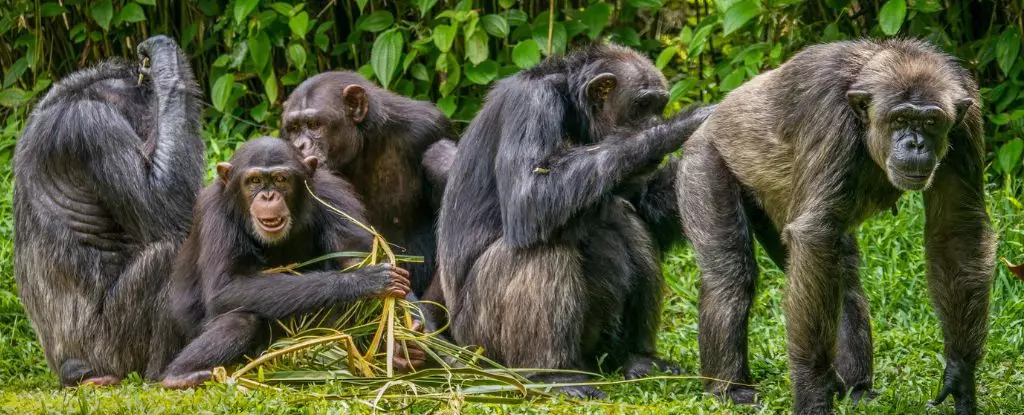Urination is a natural biological function, often viewed through a purely physiological lens. However, new research highlights the fascinating social aspects surrounding this common act in both humans and primates. A recent study conducted on captive chimpanzees has unveiled a remarkable phenomenon: urination can be contagious, demonstrating how social structures and relationships may influence even the most private of actions. This article delves into the findings of this research, exploring the implications for our understanding of community dynamics among primates and possibly even humans.
The study, carried out at the Kumamoto Sanctuary in Japan, examined the behaviors of 20 chimpanzees—16 males and 4 females—over an extensive observation period of 604 hours. Researchers, led by primatologist Ena Onishi from Kyoto University, aimed to quantify the instances of synchronous urination, specifically noting when multiple chimpanzees urinated within a 60-second window. This approach allowed the researchers to assess the potential contagious nature of urination among the group.
The researchers also theorized that various environmental factors—such as feeding time or space dynamics—could influence these synchronized actions. They discovered that the likelihood of one chimp following another in urination was significantly higher when they were situated within three meters of each other, suggesting that proximity plays a role in this social behavior.
An intriguing question arose concerning the social bonds between the chimps and whether these relationships influenced their simultaneous urination behavior. Surprisingly, the study found no significant correlation between the frequency of grooming—a behavior known to strengthen social ties—and the tendency to urinate around the same time. Instead, a clear influence of social rank emerged from the observations.
When a dominant chimp began to urinate, lower-ranking individuals were notably more likely to follow suit. This finding challenges traditional views of social behavior, suggesting that hierarchy plays a more compelling role than camaraderie in promoting synchronized actions. Onishi indicates, “We were surprised to discover that the contagion pattern was influenced by social rank. This is particularly noteworthy, as we initially drew parallels to the well-studied phenomenon of contagious yawning, which is often observed amongst closely bonded individuals.”
The implications of these findings extend beyond mere curiosity about animal behavior. Understanding the social dimensions of urination among chimpanzees may provide insights into the importance of such behaviors in maintaining group cohesion and hygiene. In evolutionary terms, behaviors that foster community well-being can enhance survivability and social stability. As primates, including humans, navigate their social environments, even involuntary actions like urination could serve as bonding rituals that reinforce hierarchies and group dynamics.
The relationships unveiled in this research raise various questions about how social influences can shape behaviors in both primates and potentially humans. In human societies, for instance, it is not uncommon to observe individuals using communal restrooms, which might hint at a deeper societal pattern connecting bathroom habits with social norms and relationships.
Culturally, practices surrounding urination can vary significantly, as noted by primatologists like Onishi, who cites an Italian proverb regarding public urination and the concept of “Tsureshon” in Japanese culture. The research could suggest that these behaviors have evolutionary roots that echo across species, linking the physiological need to societal constructs within both human and primate contexts. In times of environmental stress or social instability, synchronized behaviors could serve as a form of solidarity, reinforcing group identity and cohesion.
While the phenomenon of contagious urination may appear trivial on the surface, the study of chimpanzees offers profound revelations regarding social behavior and hierarchy. It sheds light on how even the most mundane of acts can reflect complex social structures, opening up avenues for future research into the intersections of biology, sociology, and evolution. Ultimately, examining such behaviors not only enriches our understanding of non-human primates but may also prompt deeper reflection on our own social instincts and practices.

Leave a Reply